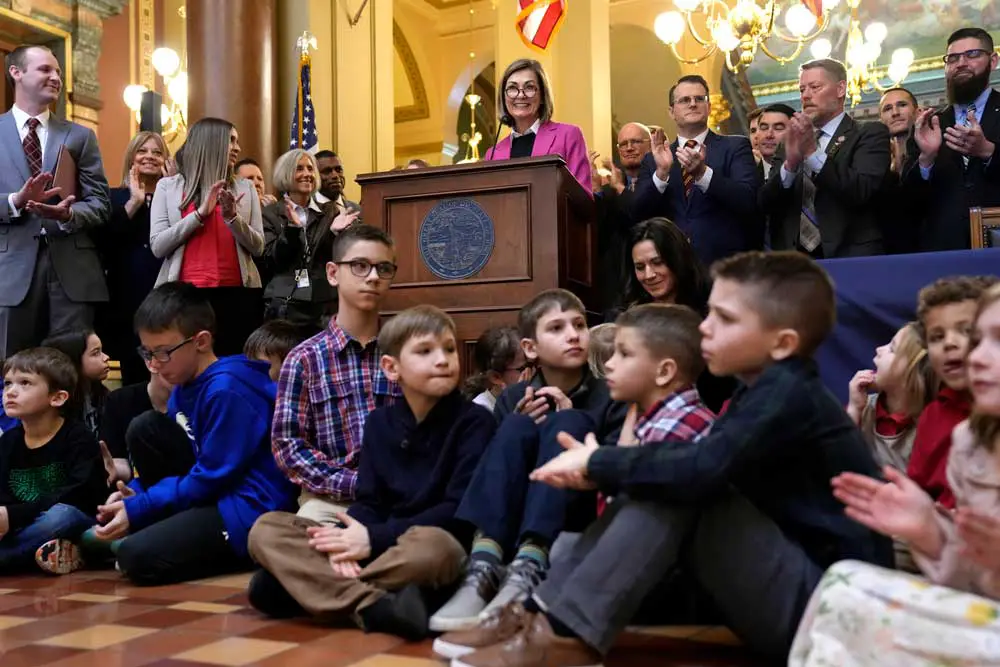
By Christopher Lubienski
Arizona lawmakers decided in late 2022 that the state will pay tuition, related education expenses or both for children at any school parents select, including private and religious schools.
It’s the latest step in an effort to provide public funds for private schools that in Arizona began in 2011. And that step was taken along what I have discovered to be a familiar route.
As an education policy researcher, I wanted to understand why these voucher programs are becoming more common despite evidence they do not improve, and may even impede, students’ educational achievement. Rather than put the question of whether to use public money for private schools before voters, advocates for choice almost always want state legislatures to make the decision instead. That may be because a careful look at the efforts suggests that if it were up to voters, school choice proposals would rarely succeed.
Lawmakers in Iowa, West Virginia and New Hampshire all recently passed plans similar to Arizona’s. In 2022, Michigan advocates – led by former U.S. Secretary of Education Betsy DeVos – chose to petition legislators to approve such a plan for over a million children, rather than seeking a public referendum on the issue.
Private and religious schools have traditionally been prohibited from receiving taxpayer dollars. But since private school-choice programs began in the 1990s, 32 states and the District of Columbia have adopted 76 school voucher or voucherlike programs that allow families to send their children to private schools at public expense, according to the pro-voucher group EdChoice. Additionally, 45 states and Washington, D.C., have charter school programs, which are publicly funded but privately managed.
But of those 121 programs, only two have been approved by voters. The issue has been brought to referendum in various states 16 times since Michigan first voted on it in 1978 and has been rejected 14 times. In 2012, Georgia voters enabled state lawmakers to authorize charter schools, and Washington state voters barely passed a charter school initiative they had rejected twice before.
Parents’ interest growing
Parents are taking advantage of those opportunities. There are 50 million public school students in grades K-12 in the U.S., of whom 3.4 million attend charter schools. About 5.5 million students are in private schools. The numbers are proportionately small, but growing.
For instance, from 2000 to 2016, the U.S. Department of Education reported the number of students in charter schools increased more than fivefold.
Pressure on public schools
Advocates for public schools argue that when public money is spent on private schools, it “[siphons] off students, resources and funding” from public schools.
But supporters say voucher programs usefully pressure public schools to improve under threat of losing enrollment and funding.
And still others emphasize distinctions between different types of choice programs, regulations and funding schemes. For instance, some people support publicly funded charter schools as options within the public school system, but do not support vouchers allowing families to take tax dollars to help pay for private schools.
Referendums failed
The process by which these programs have become law started in 1978 in Michigan with petitions and referendums, but they largely failed. That 1978 proposal sought a statewide referendum to create vouchers and got on the ballot but was rejected by a 3-to-1 margin. A very similar Michigan petition drive in 2000 failed by a similarly large margin. Referendum efforts in 2000 in California, and one in Utah in 2007, also failed.
As a result, more recent efforts aim to go through the legislature – even if laws that have passed have also been overturned by referendums later.
For instance, a 2017 Arizona law would have allowed students to use taxpayer dollars at private schools. But before it could take effect, a petition drive gave voters a chance to overturn the law, which they did in 2018, by a two-thirds majority.
In 2022, state lawmakers passed an almost identical bill, and as he had in 2017, Gov. Doug Ducey, a Republican, signed it into law on July 7, 2022. A second petition drive to reverse it failed to round up nearly 120,000 signatures before the legal deadline, and the law took effect.
A new effort in Michigan
But in 2022, a new petition drive arose, backed by former U.S. Education Secretary Betsy DeVos, a Michigan native and former state Republican Party chair. Instead of asking voters to approve the idea, however, it used a provision of Michigan law that meant the petition positioned legislators to pass the law themselves.
That process sought to preempt another referendum on school choice, as well as a likely veto from Democratic Gov. Gretchen Whitmer.
When voters flipped control of the Michigan Legislature from Republican to Democratic in November 2022, DeVos’ group withdrew its petition, effectively killing the proposal.
The next time a school choice program is put before lawmakers, it’s worth asking whether the program would pass if it were put before voters. History shows the answer is usually a resounding “no.”
![]()
Christopher Lubienski is Professor of Education Policy at Indiana University.




























Leave a Reply